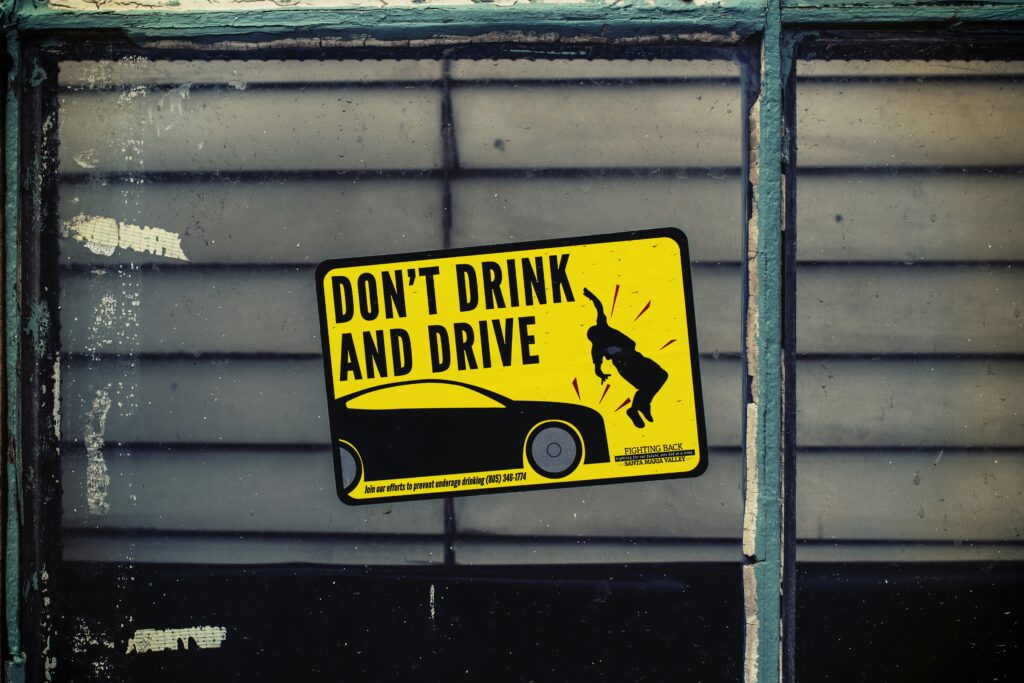The COVID-19 pandemic brought unprecedented changes to daily life, leading to a notable surge in alcohol consumption across America. As lockdowns and social distancing measures were implemented, many individuals turned to alcohol as a coping mechanism for stress, anxiety, and isolation.
Research indicates that the sale of alcoholic beverages spiked significantly during this period, with a marked increase in both frequency and volume of consumption.
Discussing the safety risks associated with this surge is crucial. The rise in alcohol intake has been linked to an increase in injuries and fatalities, both at home and on the road. The pandemic-induced surge in alcohol use exacerbated the already severe problem of drinking and driving in the U.S., raising concerns about public safety.
Addressing these issues is vital for understanding the broader impact of the pandemic on health and safety and for developing strategies to mitigate these risks in the future.
The Surge in Alcohol Consumption during the Pandemic
Data from the National Institute on Alcohol Abuse and Alcoholism (NIAAA) reveals that the per capita consumption of alcohol in the U.S., measured as gallons of ethanol sold, rose by 6.6 percent from 2018 to 2021. By 2021, this equated to an average of approximately 2.8 gallons per person annually, or about 597 drinks per year for Americans aged 21 and over. This level of consumption is the highest reported since 1988.
The pandemic significantly contributed to this increase, with sales of spirits experiencing a nearly 17 percent rise, while wine and beer saw growth of less than 1 percent each. With many consumers cutting back on expenditures for vacations and dining out, they opted instead to purchase premium spirits to enjoy at home.
The COVID-19 pandemic shared similarities with past crises, causing extensive illness and death. However, a significant difference was the enforced social isolation necessary to curb the virus’s spread. This separation from loved ones and social networks contributed to heightened stress levels, driving many to consume more alcohol.
During the first year of the pandemic, alcohol sales surged nearly 3%, marking the most substantial increase in over half a century. Research indicates that approximately 25% of people drank more during this period, primarily as a coping mechanism for stress. Sales of spirits, in particular, saw the largest uptick.
Historically, increased alcohol consumption following disasters tends to persist for about five to six years before gradually returning to normal levels. It is hoped that with the return of regular social interactions, the elevated rates of alcohol use and their associated health impacts will eventually diminish.
Safety Risks Associated with Increased Alcohol Consumption
The surge in alcohol consumption during the pandemic has brought several safety risks. These risks span physical health, mental well-being, and an increase in alcohol-related accidents and injuries.

Photo by Louis Hansel on Unsplash
Physical Health Risks
Excessive alcohol consumption is linked to numerous physical health issues, most notably a weakened immune system and liver diseases. Chronic drinking can lead to conditions such as fatty liver, hepatitis, and cirrhosis, ultimately impairing liver function.
Additionally, alcohol weakens the immune system, making the body more susceptible to infections and illnesses. This compromised immunity is particularly concerning during times of widespread health crises, such as the COVID-19 pandemic.
Mental Health Risks
Increased alcohol intake also poses significant mental health risks. The pandemic-induced stress and isolation have contributed to higher levels of anxiety and depression among many individuals.
Alcohol, often used as a coping mechanism, can exacerbate these conditions, leading to a vicious cycle of increased consumption and worsening mental health. Moreover, prolonged heavy drinking can develop into substance abuse disorders, further complicating efforts to achieve mental well-being and stability.
Increase in Alcohol-Related Accidents and Injuries
The rise in alcohol consumption has also led to an uptick in alcohol-related accidents and injuries. Drinking impairs judgment and coordination, increasing the likelihood of domestic violence incidents and driving under the influence (DUI) cases.
The strain on emergency services and healthcare systems becomes even more pronounced when dealing with the aftermath of these preventable accidents. Addressing these issues is crucial for improving public safety and reducing the broader societal impacts of increased alcohol consumption.
Stats Show Huge Increase in Injuries and Deaths
There was a notable rise in disease and fatalities associated with alcohol consumption, and the figures are quite striking. In the initial two years of the pandemic, the number of death certificates citing alcohol as a contributing factor surged from 78,927 to 108,791, marking a nearly 38% increase. The most significant jumps in alcohol-related deaths were observed among individuals aged 25 to 44.
During the COVID-19 pandemic, deaths attributable to alcohol use in the United States saw a dramatic spike, with over 49,000 fatalities recorded in 2020, according to data released by the U.S. Centers for Disease Control and Prevention (CDC).
Although the rate of alcohol-induced deaths has been climbing steadily over recent decades, it escalated by 26% between 2019 and 2020. In 2020, alcohol was responsible for 13 deaths per 100,000 people, up from 10.4 deaths per 100,000 in the previous year.
Additionally, there has been a surge in hospital admissions due to alcohol misuse and its repercussions, such as withdrawal symptoms and liver disease. Alarmingly, the age of individuals requiring liver transplants because of alcohol-related liver damage is decreasing, with some transplant centers reporting patients who are not even 30 years old. Regrettably, deaths due to alcohol-induced liver disease rose by more than 22% during the pandemic.
An Increase in DUI Deaths
Regrettably, Florida stands as an exception in a broader national trend. Across the United States, DUI-related incidents have surged since the COVID-19 pandemic began. According to the National Highway Traffic Safety Administration (NHTSA), in 2020, drunk-driving fatalities rose by nearly 9 percent 2020 compared to 2019, despite there being fewer drivers on the road.

Photo by Tim Mossholder on Unsplash
This spike is unprecedented. Prior to the pandemic, drunk driving incidents had been steadily declining each year, with statistics published by Responsibility.org showing that drunk driving fatalities had been decreasing by almost 50 percent per capita since 1982. However, this downward trend was abruptly reversed by the pandemic’s impact.
Moreover, traffic fatalities in the first half of 2021 reached their highest levels since 2006. This represents the most significant increase ever recorded in the NHTSA Fatality Analysis Reporting System.
The Dangerous and Sad Reality of Alcohol in America
The COVID-19 pandemic created an unprecedented situation, leading to significant increases in alcohol consumption. This surge has had profound impacts on families and communities across the nation.
The stress and isolation of the pandemic drove many to drink more, exacerbating existing health issues and creating new ones. Families have suffered as alcohol misuse has led to greater incidences of domestic violence and strained relationships.
Communities have also felt the effects, with increased demand on healthcare services and a rise in alcohol-related accidents and fatalities. The ripple effects of this crisis highlight the urgent need for comprehensive support and intervention strategies.
According to George F. Koob, Ph.D., director of the National Institute on Alcohol Abuse and Alcoholism, the pandemic highlighted how stress and negative emotions significantly contribute to alcohol misuse.
People who had already engaged in risky drinking behaviors before the pandemic were more likely to escalate their consumption during this period. Additionally, responsibilities like caregiving, along with heightened stress, anxiety, and depression, were associated with increased alcohol use during the pandemic.
However, the pandemic’s impact on alcohol-related issues has varied across different groups. For instance, an NIAAA-supported study revealed a decrease in Alcohol Use Disorder (AUD) symptoms among college students during the COVID-19 pandemic.
What Can We Do to Limit Alcoholism and DUIs in America?
Addressing the rise in alcohol consumption and its consequences requires a multifaceted approach involving public health officials, non-profits, and legal professionals.
Public health officials have launched various initiatives to combat this growing issue. These efforts include increasing public awareness about the dangers of excessive drinking, promoting responsible alcohol consumption, and expanding access to mental health services.

Photo by Hannah Busing on Unsplash
We have also seen an increase in the number of campaigns that educate Americans about the risks associated with alcohol misuse, and providing resources for those struggling with addiction is critical. Additionally, there’s a push to implement stricter regulations on alcohol sales and marketing, particularly targeting vulnerable populations.
Non-profit organizations play a crucial role in addressing alcoholism and DUIs. Many of these groups offer support services such as rehabilitation programs, counseling, and community outreach. These programs often serve as lifelines for individuals and families affected by alcohol misuse, providing essential resources and advocating for policy changes.
Non-profits also collaborate with local communities to develop and implement prevention programs, especially focusing on youth education to prevent the onset of risky drinking behaviors.
The Role of Personal Injury Lawyers in Addressing Alcohol-Related Incidents
Personal injury lawyers are instrumental in responding to alcohol-related incidents like DUIs. They work to ensure that victims of drunk-driving accidents receive justice and compensation for their injuries, medical expenses, and other damages.
By holding offenders accountable, personal injury lawyers help reinforce the legal consequences of driving under the influence, which can act as a deterrent to potential offenders. Additionally, these legal professionals often collaborate with advocacy groups to push for stricter DUI laws and penalties, contributing to broader efforts to reduce alcohol-related harm in society.
If You Were Injured by a Drunk Driver, WHG Can Help!
We have seen a significant rise in alcohol use during the pandemic was driven by stress, isolation, and heightened emotional distress. We have also seen that alcoholism can lead to DUI accidents that end up harming other members of the community. Personal injury (PI) lawyers play a crucial role in car accidents involving alcohol, ensuring victims receive necessary compensation and holding offenders accountable.
If you were injured by a drunk driver, Werner Hoffman Greig & Garcia (WHG) can provide the legal support you need. Call WHG at 1-800-320-4357 or submit this contact form to book a free consultation today.
























